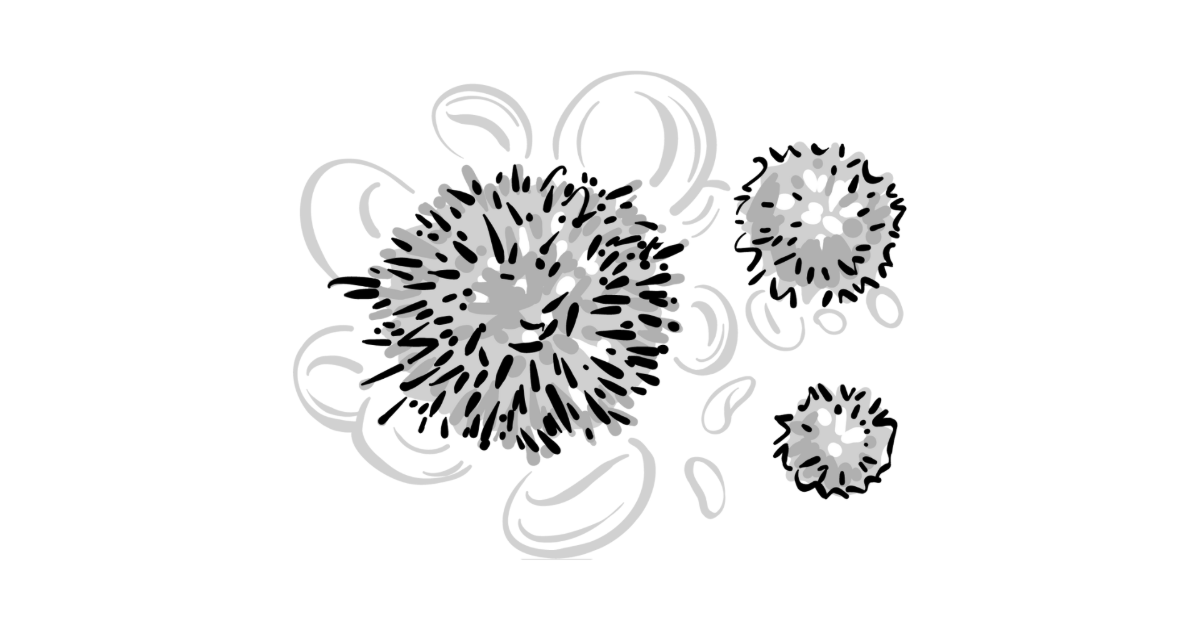At the 2025 American Society of Clinical Oncology (ASCO) Annual Meeting, Paolo Ghia, MD, PhD, presented the final analysis of the phase 2 CAPTIVATE study (NCT02910583), highlighting the long-term efficacy and safety of fixed-duration ibrutinib (Imbruvica) plus venetoclax (Venclexta) in patients with previously untreated chronic lymphocytic leukemia (CLL).1
The study showed that 73% of patients remained treatment-free 5.5 years after completing just 15 months of therapy. Patients with mutated IGHV had the most durable responses, but even high-risk patients, including those with TP53 abnormalities, showed meaningful benefit. Minimal residual disease (MRD) status at the end of treatment was the strongest predictor of long-term outcomes, reinforcing the value of full-course therapy before making clinical decisions.
The regimen was well tolerated, with no new safety concerns and strong retreatment responses upon relapse. These findings support fixed-duration ibrutinib plus venetoclax as a safe and effective frontline option in CLL.
In an interview with Targeted Oncology, Paolo Ghia, MD, PhD, deputy director of the Division of Experimental Oncology at San Raffaele Scientific Institute in Milan, Italy; full professor of medical oncology; a group leader in the B-cell Neoplasia Unit; and the head of the Strategic Research Program on CLL at the Università Vita Salute San Raffaele, discussed data from the final analysis of the CAPTIVATE study in CLL.
Chronic lymphocytic leukemia cells: © Mari-stocker – stock.adobe.com

Targeted OncologyTM: Can you provide an overview of the final analysis of the phase 2 CAPTIVATE study presented at ASCO?
Ghia: This is the final analysis of the CAPTIVATE study. The CAPTIVATE study is a phase 2 study that enrolled young patients with chronic lymphocytic leukemia in [the] frontline, and they were treated with 3 months of ibrutinib, the [Bruton tyrosine kinase [BTK]) inhibitor, to debulk, and then with 12 months of the combination of ibrutinib plus the BCL2 inhibitor venetoclax.
The study was composed of 2 different cohorts. One cohort, the initial, was an MRD cohort. Patients at the end of the 15 months of treatment were randomized based on the level of undetectable MRD. We then created another cohort of patients, [the] so-called fixed-duration treatment, where all patients stopped the treatment at the end of the 15 months regardless of the level of undetectable MRD. That is the treatment scheme that has been approved in Europe and in many other countries in the world and now can be used in patients with chronic lymphocytic leukemia in the frontline.
The final analysis is, on one side, confirming—now with longer follow-up—the very good data that we already showed before, with the benefit in terms of progression-free survival, overall survival of our patients. In particular, what we now show very clearly is the subgrouping of the patients. We analyzed the progression-free survival and overall survival in patients based on the mutational status of the immunoglobulin, with the patients with mutated immunoglobulin genes having the highest benefit, with 80% of the patients still not progressing after 5.5 years. Then patients with unmutated immunoglobulin genes—which, again, we did not reach a median progression-free survival after 5.5 years—though here only 53% of the patients will not need treatment, will not progress after 5.5 years. And third, the patients with p53 aberrations—either deletion 17p or p53 mutation—they already reached a median progression-free survival, and only one-third of patients, 30%, will have not progressed after 5.5 years, which is maybe a little bit disappointing compared to all the other patients, but it’s also very reassuring because one-third of patients still might benefit from more than 5 years of progression-free survival with only 15 months of therapy. In the future, we might need to really understand who are these patients who respond better or worse than others.
The other point that we showed and confirmed now with higher numbers is that we can retreat the patient. The vast majority of patients, upon progression and need of treatment, can be retreated with either ibrutinib alone or ibrutinib plus venetoclax, and the vast majority of patients, roughly 80%, 85%, do respond again. And those who do not respond, they still have controlled disease for up to 18 months as a stable disease. One patient unfortunately developed Richter’s transformation.
What can you discuss regarding safety? Were there any other findings to highlight?
No new signals [were seen,] even with a longer follow-up. And also, in terms of other malignancies, which is always what we are worried about, particularly with continuous treatments, here we don’t see any signal. The vast majority of the other malignancies that can develop are nonmelanoma skin cancers.
We also presented the data showing that the level of undetectable MRD reached at the end of the treatment are those that are really predicting the long-term progression-free survival, and not the value that has been assessed after 7 months of treatment, really suggesting that we need the entire combination to work for a certain number of months before we get to the best response.
How durable were responses after treatment completion? How many patients remain treatment-free at follow-up?
That is a very good question because I mentioned the progression-free survival, so patients who did not progress, which in CLL is not so relevant because even when the patient progresses, then we can write it in the medical records, but we do not need to act upon progression. We need to start treatment only when the patient reaches certain criteria that really make the treatment mandatory. So, the patient becomes anemic—less than 10 g/dL—becomes thrombocytopenic—less than 100,000 per mL—or has bulky lymph nodes more than 10 cm. This is much more time beyond the progression itself. In fact, what is interesting is that three-quarters of the patients did not yet need another treatment after 5.5 years of median follow-up.
How did MRD status at the end of therapy correlate with long-term PFS and OS?
We all expected that earlier time points would predict the long-term PFS, because that’s somehow the dream of the doctor, to have an early readout that can allow us to understand, for example, whether to shorten the therapy or to prolong it. But instead, it did not turn out to be true in this particular study. So, only the undetectable level at the end of therapy was predicting the PFS. So, we need to complete the therapy before we can say if the patient achieved a durable undetectable MRD and a durable response.
What does this data suggest about using MRD as a tool to guide fixed duration therapy decisions?
This combination of ibrutinib plus venetoclax has been approved as fixed duration. We cannot either shorten or prolong the treatment based on detectable MRD. Also, we do not really have data. At the moment, there are a couple of other studies that explore the possibility of an MRD-driven approach, but we need much longer follow-up to see if this is reasonable, if this is more effective. At the moment, there is probably no need to assess the level of detectable MRD, for the simple reason that we wouldn’t know what to do, whether to prolong the therapy, to add an extra drug—we don’t have data to make that decision.
How does a fixed duration regimen compare with continuous BTK or BCL2 inhibitor therapy in frontline CLL and SLL?
At this congress there will be another abstract presented about the FLAIR study [ISRCTN01844152] that shows for the first time that ibrutinib plus venetoclax is better than continuous ibrutinib. The only problem there is that the ibrutinib plus venetoclax is given with an MRD-driven method, meaning that the patient can stop the therapy only after achieving undetectable MRD. And if they do not achieve undetectable MRD, they keep on being treated until they achieve undetectable MRD. So, it is true that it shows more benefit compared with ibrutinib alone, but it is also true that some patients will continue the combination of the 2 drugs for many years. So not really making it a fixed duration treatment because we are talking about treatment for 5 or 6 years. At the moment, we do not know. We will have the results of the CLL17 study [NCT04608318], comparing ibrutinib to fixed duration ibrutinib plus venetoclax, and also to venetoclax plus obinutuzumab [Gazyva]—2 of them have fixed duration as well.
What unmet needs still exist in this space?
The unmet need will always exist, meaning that as long as we do not cure the patient, the patient will relapse, and therefore they will become resistant to whatever therapy we are going to use in the next future. Until a few months ago, we were talking about double-exposed, double-refractory patients, those who have been treated and became resistant to BTK inhibitors and BCL2 inhibitors. Now we are talking about triple-exposed, triple-refractory patients, so patients who are also becoming refractory to the third line of noncovalent BTK inhibitor, pirtobrutinib [Jaypirca], that has been very recently approved. So now we have patients who have been exposed to all 3 drugs, and they are refractory. And in those patients, we only have the possibility of experimental studies.
What are the key takeaways from this final analysis?
The ibrutinib plus venetoclax is safe. No safety signals have been seen, even with the retreatment of the patient. Second, the responses are durable. We have a median progression-free survival that has not been reached after 5.5 years, and a time to next treatment which is much longer—73% of patients not needing therapy after 5.5 years. And third, MRD is predictive of long-term durable responses only if assessed at the end of treatment.
